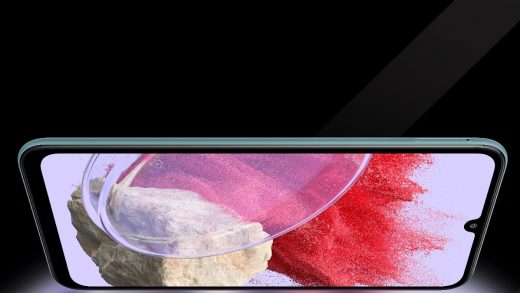
Starting this long weekend, Jaws 3D is showing in theatres. Not to be confused with the misbegotten 1983 sequel Jaws 3-D, this is Steven Spielberg’s original 1975 classic, now re-released in 3D on the big screen.
Movie review
Jaws 3D
Starring Roy Scheider, Robert Shaw and Richard Dreyfuss
● Polo Park
● PG, 126 minutes
★★★★ out of five
I was too young to see Jaws when it first came out, though lurid stories of dismembered legs filtered down to the playground. I later caught it on TV, then on VHS tape. I’ve watched it on my laptop screen. I missed the 2011 summer beach showing at the Gimli Film Festival, a platonically perfect way to watch a movie about summer beaches.
So, given a chance to see an adored movie on the big screen, I dived right in (so to speak).
The 3D aspect of this Jaws reprise felt fun but not necessary. It made the jump scares jumpier, the chompy scenes chompier, and the sequences where ocean water seems to slosh over the edge of the screen even sloshier. Possibly the most alarming thing on that big 3D screen was Robert Shaw’s giant square head.

Supplied
On fins and needles: Richard Dreyfuss, left, as Matt Hooper and Robert Shaw as Quint on the Orca.
What did feel necessary, and just a bit nostalgic, was to see what is sometimes called the original summer blockbuster in an actual movie theatre.
In 1975, Jaws jampacked the theatres and broke box office records. People waited in lines that snaked around the block and went back for repeat viewings.
The shark, in all its toothy menace, made the cover of Time magazine. Related merch included beach towels and pool toys. Jaws became a pop culture phenomenon.
The movie reconfigured the release calendar, with studios starting to schedule big tentpole projects aimed at wide audiences during the summer months. Increasingly, these summer movies featured plots that could be summed up in an elevator pitch, in this case: “Beach town that relies on tourism is terrorized by a 25-foot man-eating shark.”
The studio spent money on the movie, which went way over budget, partly because of problems with the mechanical sharks, but also expended an unprecedented amount on marketing, including TV spots and a tie-in with the bestselling Peter Benchley book.
The subsequent profits led, inevitably, to a new reliance on franchises, the original’s boffo box office proving so irresistible Universal kept trying to replicate it with watered-down sequels.
Jaws was huge in 1975. It drew a kind of concentrated attention that is rare now, in a media universe where our choices have become diffused, where coverage is spread out over multiple outlets, where we all carry our own individual screens around with us.

Supplied
The poster for 1975’s summer blockbuster Jaws is a classic.
In 2022, we have a different model for making, releasing and watching films. Bricks-and-mortar movie theatres have struggled in recent years, even before the pandemic further disrupted viewing habits.
So sure, the release of Jaws 3D is a calculated attempt to lure us back in with an old-school blockbuster that looks swell on the big screen, and maybe part of what I felt watching it was that lingering “last picture show” vibe.
But really, the best reason to see Jaws 3D in theatres is that it’s just a terrific film. Even if you haven’t watched it, you probably know the story. A series of shark attacks on the East Coast island town of Amity threatens to shut down the beaches just as the lucrative July 4th weekend is getting underway.
After some heart-stopping set pieces, police chief Brody (Roy Scheider), a newcomer to the island who doesn’t like the water, along with tough old fisherman Quint (Shaw) and brainy young scientist Hooper (Richard Dreyfuss), head out to kill the shark.
Jaws is essentially a creature feature, and it delivers the visceral pleasures that genre promises. But it’s also elevated by Spielberg’s ace visual storytelling, by his carefully set up and meticulously executed action sequences, and by his expert pacing, which builds suspense by suggesting the monster rather than revealing it.
We don’t really see the shark in the long lead-up to the final showdown. Rather, we hear it in John Williams’ iconic “du-duh, du-duh, du-duh-du-duh” score.
The themes also run unexpectedly deep and dark. Spielberg is often considered a sunny, optimistic, gee-whiz-type director. Jaws is a summer movie that’s really a summer movie, with sand and suntan oil and beach bonfires and Fourth of July American flags, but it’s a summer overshadowed by ominous threat.
The movie can be read as a 1970s critique of institutional failure, as Amity’s leading citizens are seen putting profit over public safety and pushing disinformation.
In fact, it doesn’t take much to give Jaws a topical pandemic update. Amity’s venal, desperate mayor, unable to make the hard political choices, actually became something of a meme during the early days of COVID-19.
Jaws changed the cinematic landscape in 1975 because it’s so scarily entertaining, but the film has endured because it still has something to say. Unfortunately, that’s the blockbuster-summer-movie lesson that didn’t stick with so many of the big releases that came later.
Jaws 3D (rated PG, 126 minutes) is showing now at Scotiabank Theatre at Polo Park.


